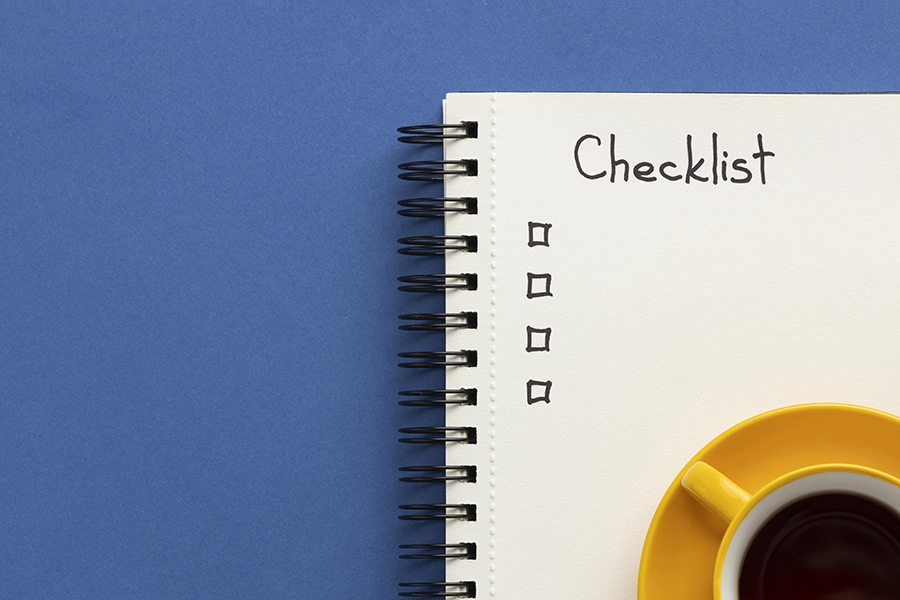A few people are usually willing to run maintenance in their homes. However, the greatest investment for Americans is a home, which explains why maintenance is a priority for them. If you are a new homeowner, you will likely find home maintenance difficult, but you should not let this overwhelm you. You must understand that a home maintenance schedule is key for each house’s upkeep.
Remember, a home functions well with seasons, such as winter and spring. Furthermore, when you neglect primary areas of your home, you will be jeopardizing your family’s safety. Running a regular check on your electrical systems, security, plumbing, exterior, appliances, cooling, and heating systems saves your money and prevents breakdown. All these will help you keep your home appropriately.
Therefore, the maintenance checklist featured in this comprehensive article will help you understand the home maintenance checklist better and follow it regularly.
What Is a Home Maintenance Checklist?
A home maintenance checklist is a document of items that require maintenance tasks. It is a maintenance program of basic building blocks. Furthermore, it helps you schedule cleaning, repairs, and seasonal updates. Home maintenance enables you to maintain the prime condition of your home.
The Ultimate Home Maintenance Checklist (for Every Season)
Below is an ultimate home maintenance checklist for each season:
Home maintenance checklist for summer
When sun season knocks on the door, you should not worry about how you will go about home maintenance. Instead, use a summer home maintenance guide to eliminate the complex task immediately when the summer season commences. Most of these tasks are usually done indoors, and they include:
- Pruning shrubs and trees
- Sealing tile grout
- Replacing exterior and interior showerhead and faucets washers if necessary
- Examining leaks around bathroom cabinets, toiles, and bathroom cabinets
- Checking if dishwashers feature leaks
- Clean freezer coils and refrigerator, remove items and ensure you clean drip trays
- Cleaning the kitchen exhaust fan filter
- Eliminate lint from dryer vents, outside and inside washer hoses
- Oil the entire door hinges, such as the garage door, garage door chain, and opener.
Home maintenance checklist for spring season
When trees show signs of budding and the ground is already softened. It means you should get your home ready for the spring season. Apart from regular spring cleaning, it would help if you also considered general upkeep tips. Utilize the maintenance checklist below to ensure your home is in good shape during the spring season.
- Fertilize the lawn
- Flush or drain the water heater
- Service the air-conditioner system
- Do away with insulation from the outdoor faucet and examine sprinkler heads
- Replace or repair weather stripping and caulking around mechanicals, doors, and windows
- Examine the chimney for any damage
- Vacuum lint from the dryer vent
- Check bath caulking, shower, and sink if they have deteriorated
- Find a professional to pump and inspect your septic tank
- Replace your batteries in carbon monoxide detectors and smoke
- Eliminate debris and leaves from downspouts and gutters
- Power-wash siding and windows
- Refinish your deck
- Dust light fixtures and polish wood furniture
- Clean door and window screens
- Alter your air-conditioner filter
- Check your roofing for damaged, loose, and missing leaks and shingles
Home maintenance checklist for winter
The Winter season is never friendly sometimes because it can be extremely harsh to your home. The winter freezing temperature can result in multiple issues, such as roof damage and frozen pipes. Therefore, to avoid calling experts and prevent winter harm check the winter items below off the home maintenance checklist:
- Clean your dishwashers, showers, tubs, and sinks’ drains
- Empty and clean drip trays
- Vacuum freezer as well as refrigerator coils
- Vacuum the exhaust fan grill of your bathroom
- Examine the downspouts, gutters, and roof for any damages, especially after storms
- Check the basement for any leaks during thaws
- Engulf your unit for air-conditioning
Home maintenance checklist for fall
This is the best season for handling home maintenance projects since the weather is usually dry with moderate temperatures. However, before you commence the seasonal home maintenance checklist, ensure you check the exterior and interior of your home. In addition, many of these tasks do not require help from an expert. But if the project you are handling is beyond your potential, do not hesitate to contact a professional for assistance, better safe than sorry. The following are fall seasonal home enhancement recommendations:
- Examine water heaters for leaks
- Wrap insulation around the pipes in unheated garages and outdoor faucets
- Drain the systems of in-ground sprinkler
- Drain and store hoses
- Find frayed wires as well as cords
- Check exterior door hardware and fix loose locks and rusty handles
- Vacuum lint from your dryer vent
- Clean door and window screens
- Clean your carpets
- Change the batteries in carbon monoxide and smoke detectors. Remember to install smoke detectors in your home, on each floor, including the basement.
- Replace and repair siding
- Before holidays, ensure you tune up primary home appliances
- Insect your fireplace professionally
- Winterize and drain exterior plumbing
- Mend gaps and cracks in your walkway and driveway
- Eliminate debris and leaves from downspouts and gutters
- Power-wash siding and windows
- Check your roofing for damaged, loose, and missing shingles as well as leaks
- Trim the siding with paint and touch up its exterior
- Swap drafty old windows to enhance sufficient energy-model
- Seal gaps and cracks in your doors and windows using caulk, and if necessary, you can replace them
- Examine the fireplace for hazards or damage
- Clean the fireplace flues
- Hire a professional to inspect the forced-air heating system; schedule this before the early fall and late summer season.
- Aerate the lawn and rake leaves
Home improvement monthly checklist
Carrying out regular home inspections and accomplishing monthly home enhancement projects helps you manage and keep track of your maintenance schedule. Below is a monthly maintenance comprehensive checklist that will assist you in saving funds and time:
- Grind ice cubes for cleaning garbage disposal and flush it using baking soda and hot water
- Flush out the hot water from your water heater to eliminate accumulated sediments
- Inspect outdoor and indoor air vents to ensure they are not blocked
- Vacuum heat vents and heat registers
- Examine wear in electrical cords
- Test the entire ground-fault circuit interrupters, fire extinguishers, carbon monoxide detectors, and test smoke alarms
- Inspect sink and tub drains for debris and unclog them if possible
- Clean showerheads and faucet aerators to get rid of mineral deposits
- Examine your water softener and, if necessary, ensure you replenish salt
- Clean your surface filter to eliminate dust build-ups. This will make it possible for you to minimize energy bills and regulate your home’s temperature.
Cleaning mistakes making your home dirtier
A few common cleaning habits can make your home look dirtier. These habits are likely to leave behind grime, dust, and bacteria, creating a lot of work in the long run. Therefore, when cleaning, ensure you avoid the following mistakes that have the maximum potential of making your home dirtier:
Cleaning from the ground as you go up
You might do double work if you start with your floor since debris, dust, and crumbs are likely to drop on the floor and force you to mop for the second time. Start from the top and finalize with the floor to avoid this mess. This will make cleaning finish faster and easy.
Inadequate ventilation
Ventilation is crucial for cleaning detergents featuring ingredients such as bleach or ammonia. Bear in mind that fumes from these cleaners can irritate the airways. To clear these fumes, switch on your vent fan, turn on your air purifier or open the window. After cleaning, leave that specific room.
Utilizing one cleaning cloth in your entire house
Reusing a cleaning cloth in all your rooms is easy to transfer grime and germs in your rooms. No one would like to transfer bacteria from their bathroom to the living area. Thus, ensure you have multiple cleaning cloths for various rooms. Suppose you utilize disposable wipes; each cleaning job should feature wipes to avoid transferring bacteria.
Use sponges to clean surfaces
Think before you opt to use sponges to wipe your countertops. Besides, kitchen sponges usually keep bacteria, which can easily transfer to other surfaces when cleaning. To prevent the spread of germs, ensure you use a clean microfiber cloth to wipe your surfaces. And if you must use sponges, you must disinfect them regularly and replace them monthly.
Wiping surfaces very fast
You should not wipe your surfaces too soon. Disinfectants usually consume time to start working. Therefore, ensure you exercise patience. In most cases, the surface requires to be wet for a long duration to get rid of germs efficiently. Endure you read the labels featured on the cleaning detergents to determine the duration it takes to disinfect or sanitize.
Rubbing stains and not blotting
Splatters and spills need immediate action to avoid unnecessary stains. However, if you start scrubbing immediately, you will make everything worse. Rubbing can damage your upholstery fibers or material. Ensure you blot stains using a clean white cloth to eliminate the residue. After that, use an appropriate method that best suits your material for stain removal.
Disinfecting before cleaning
There is a comparison between disinfecting and cleaning, significantly impacting how you clean the surfaces. Disinfecting utilizes chemicals to kill germs, while cleaning removes germs from the surface. Suppose the surface is engulfed with dirt or dust. Your disinfectant will not efficiently target germs. Therefore, ensure you clean before using the disinfectant. The surface should be free from debris and residue for chemicals to work effectively.
Utilizing dirty cleaning tools
Before you start cleaning, ensure your cleaning tools are clean to prevent the spread of bacteria, dust, and dirt from your home. Make sure you wash cleaning tools, such as mop heads, scrub brushes, and cleaning cloths after use. Empty the vacuum immediately, its full wash, and alter your filter to enhance performance.
FAQs
The tips mentioned below are best for saving your home’s energy consumption and maintaining your utility bill minimal:
· Utilizing the sun
· Adding insulation
· Upgrade windows
· Fixing water leaks
· Fixing air leaks
· Replacing filters
· Planning tune-up
· Filling gaps
· Altering your lightbulbs
· Reducing temperature
· Programming the thermostat
· Utilize cold water for your laundry
· Unplug your electronics
· Utilize occupancy sensors
· Purchase energy-efficient appliances
Final verdict
You are now familiar with the home maintenance checklist based on this detailed post. Therefore, to get rid of service delays, keep your family comfortable, and maintain your home’s value. Ensure you follow the above home maintenance checklist regularly. You must know that no one usually wants to see their investment wasted.








